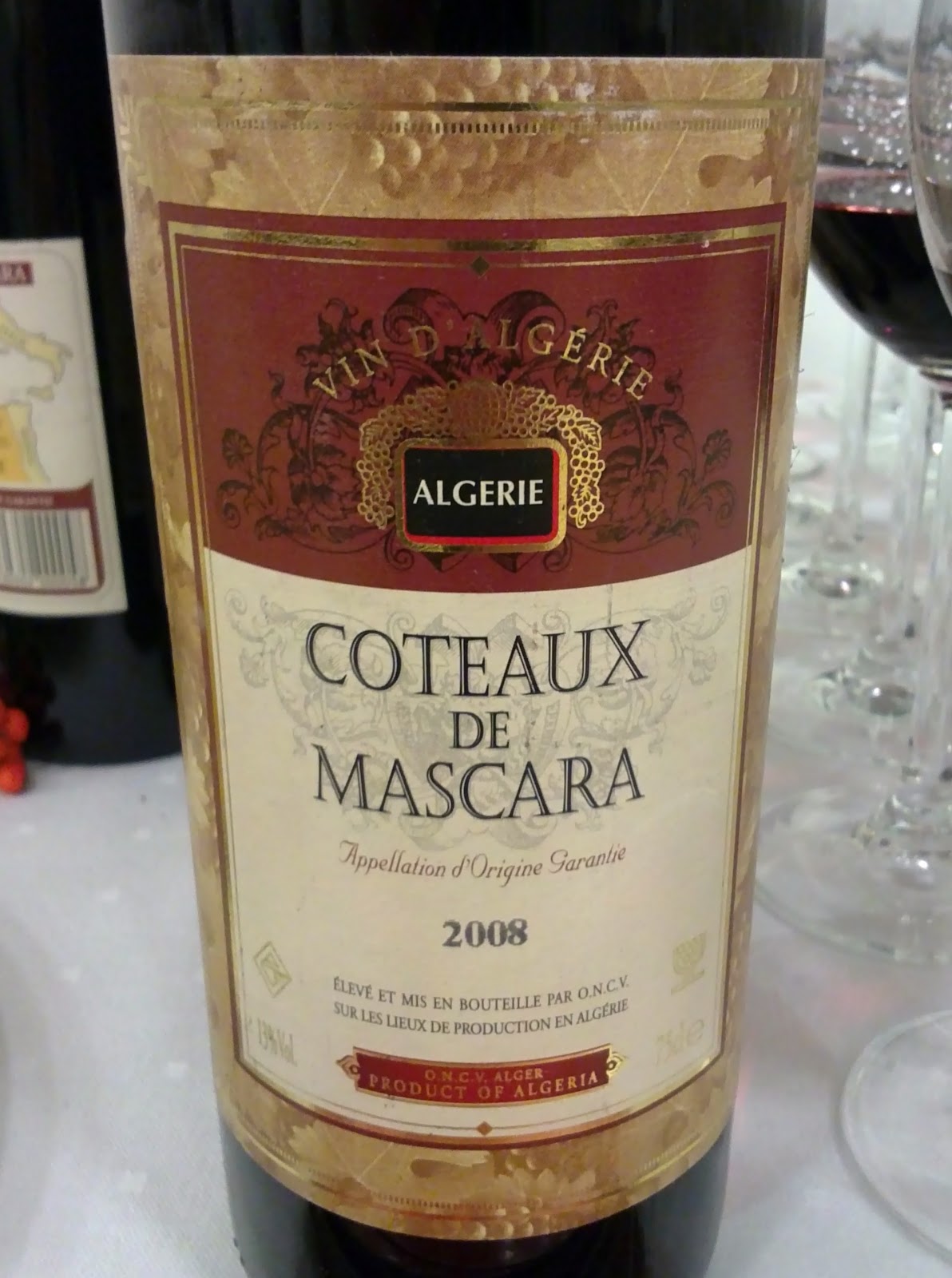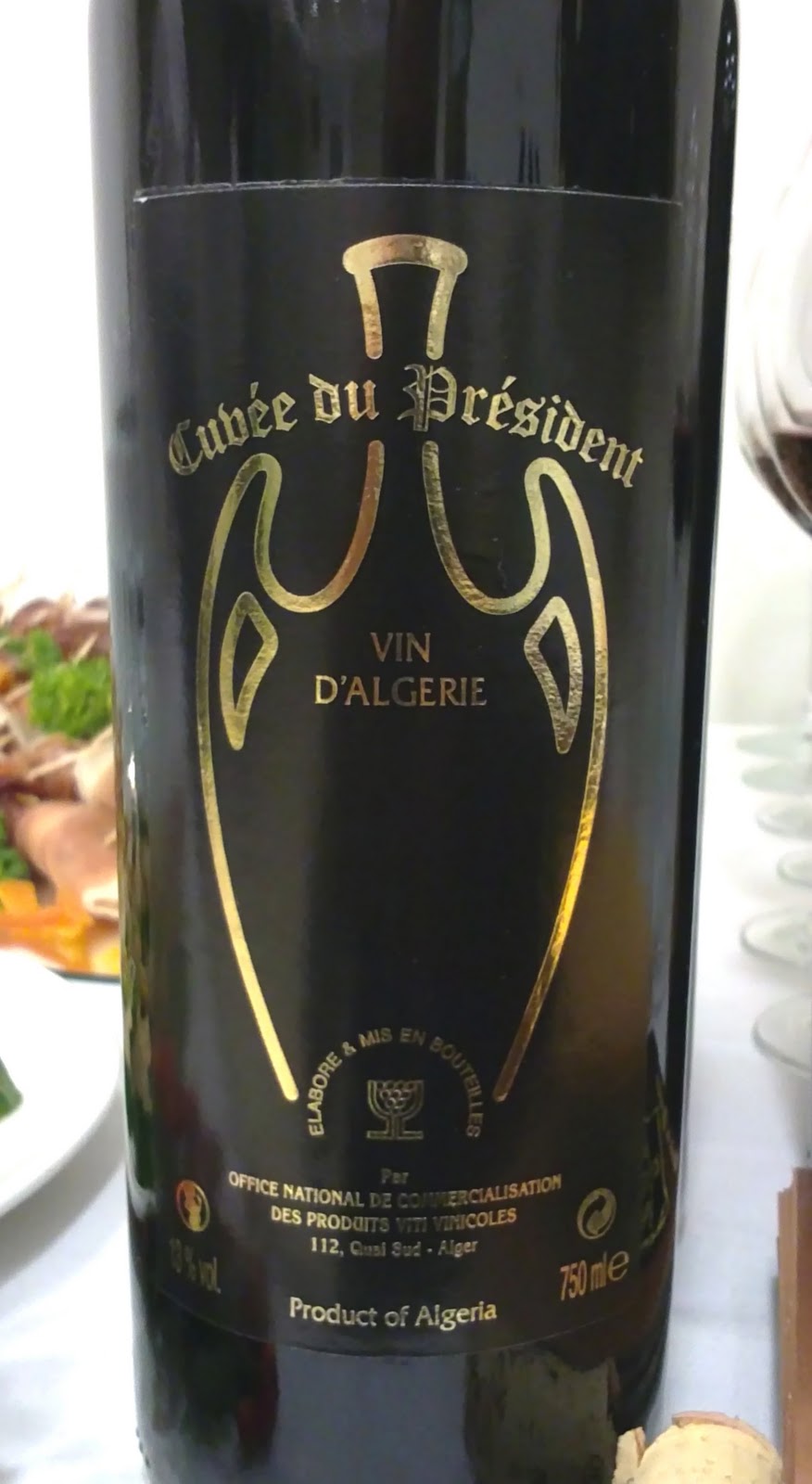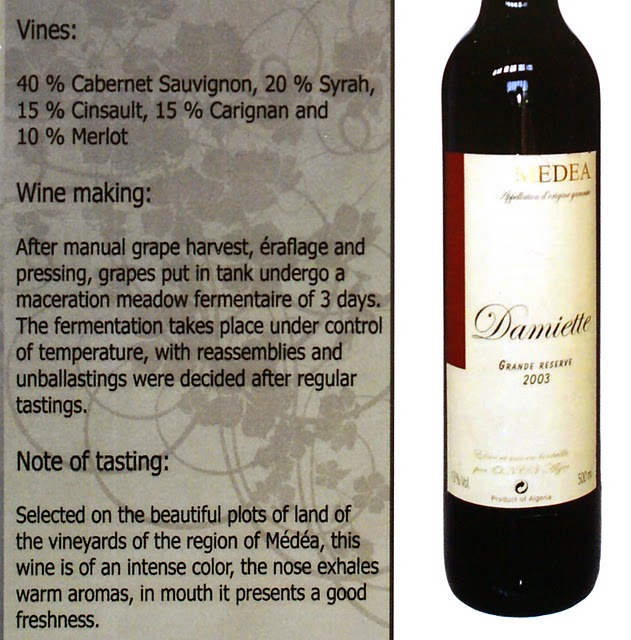Algeria: decline and hope
Posted on 11 October 2010
Just came back from a tasting of wines from Algeria. It’s a rather exotic wine country for most of us, and I challenge you to have tasted any of the bottles mentioned below. Their availability in the West is very limited, with only 5% exported, mostly to France.

Statistics tell us that Algeria today has nearly 70,000 hectares of vineyards (roughly equivalent to Portugal and Hungary, which are serious wine countries) though the wine production is actually more like that of Canada or the Czech Republic. What makes these figures particularly relevant is that in the 1950s, Algeria was one of the largest wine producers in the world with more than 500,000 ha of plantings. That wine was produced and consumed by the French, and as the period of French rule ended in 1962, the Algerian wine sector has been steadily declining.
The French legacy still continues: in the grape varieties that are grown – the Rhône classics such as Grenache, Carignan, Cinsault, Syrah as well as some Cabernet Sauvignon – and the slightly overambitious appellation d’origine garantie system that distinguishes seven major viticultural zones. The vineyard locations are actually exciting: high on the Atlas plateau at 600–900 m above sea level, with large temperature difference between night and day.

The other peculiar characteristic of Algerian wine is that it can only be bottled and marketed by the state-owned Office National de Commercialisation des Vins (ONCV). Grapes from the entire territory of Algeria are vinified in 8 regional centers and blended either under single appellation brands or multi-zonal cuvées. There are no private estates, and wine production is part of a planned economy.
I tasted these wines several times in the past, and this was my most complete session with 12 bottlings. The Coteaux de Tlemcen 2008 is certainly rather bad, dirty and faulty, while things such as the organic El Mordjane 2008 or the Médéa Château Tellagh 2008 were showing rather diluted and characterless. The traditional cuvées here included the Coteaux de Mascara 2008 and the multi-vintage Cuvée du Président. Made in a conservative Rhône style, these wines spend a long time in concrete tanks and used oak, and are perhaps released a tad late by today’s standards: colours are faded, fruit is low, the structure is mellowed and the focus is on a medium-bodied, food-friendly but not terribly expressive fruit & spice substance. There’s occasionally a bit of oxidation. I enjoy these wines for their simplicity and sense of restraint, though they are certainly not commercial.
 |
| Algeria also has potential to make seriously good rosé. |
ONCV are seeking export inroads and so there is some stylistic evolution. Varietal wines such as the 2008 Syrah and Cabernet Sauvignon are made in a much more upfront, almost jammy style that is clearly taking Chile rather than Côtes du Rhône as a reference. The interesting duo of Cuvée Monica 2008 and Domaine de Saint-Augustin 2008 are made with more Carignan, carbonic maceration but then 18 months of oak: denser in texture, low-acid as all these Algerian wines but clean and generous, with no oxidative notes, I thought these were really successful and showing that with more precise winemaking, Algeria can make surprisingly competitive wines.

Whether they can be really high-class is open to debate. Two reserve bottlings had a mixed showing. The Damiette Grande Réserve 2008 is concentrated, plummy, almost amaronish in flavour but also a bit too hang-timey and oxidative; on the whole it’s penalised by the lax winemaking. Selatna Réserve 2008 is similarly concentrated, more solid and fresh, showing the regional, richly fruity, brooding, spicy style, but again a little too pruney and raisiny for my tastes.
This was an interesting tasting. I wonder how well-suited the state-controlled and obviously slightly conservative management of the ONCV is to face the challenges of a global wine market. Quality requires investments but also a vision. Yet with a cleaner approach to winemaking and a more selective viticulture, Algeria seems to have all the assets to produce plentiful, reliable commercial wine in a style that I’d prefer to what can be found in budget bottlings from Chile or South Africa today.
 |
| Algeria also needs to invest in promotion materials: Google Translate of tastings notes is not good. |
Disclosure
I did a paid presentation of these wines for the diplomatic corps in Warsaw.






